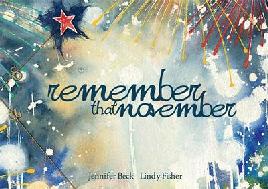Parihaka is an important event in New Zealand's history. The Taranaki settlement of Parihaka showed peaceful resistance to a militia invasion on 5 November 1881. This self-sufficient community was made up of Māori who had become dispossessed during the land conflicts and was led by two prophets – Te Whiti o Rongomai and Tohu Kākahi.
Commemorate Parihaka at Lyttelton
Lyttelton Community House wish to invite you to attend the Annual Parihaka Remembrance service. This will be held on Wednesday 5 November, 10am at the Lyttelton Rose Garden - (Former Gaol site). From there you are also invited to attend a second service that will be held at the memorial stone next to the church at Rapaki. Light refreshments will be served after this in Lyttelton at Community House, 7 Dublin Street. Please phone Christine on 7411427 if you require further information.
Aurelia Arona - formerly our Kaitakawaenga and now Māori Liaison Librarian at the University of Canterbury - described it thus:
The community at Parihaka grew following the land wars and as a result of the “confiscation” of land (often enabled legally through the Government passing legislation) in the Taranaki area. In addition to the continuing land grab, the government of the time also failed to set aside the reserve land it had promised to the local peoples. In response to this, the citizens of Parihaka lead by the prophets, Te Whiti o Rongomai and Tohu Kakahi established a movement of peaceful resistance to protest the actions of the Crown. Government officials feared that Parihaka might well incite more iwi to rebel against Government policies and set about destroying the peaceful resistance movement by means of an armed invasion and the destruction of the settlement of Parihaka.
It is said that on the day of the invasion the soldiers were greeted by singing children (tātarakihi) and the followers of Te Whiti and Tohu put up no resistance. Many of the men involved in the peaceful resistance movement were detained- some were imprisoned for years without trial and were transported to prisons in the South Island or sentenced to hard manual labour in places like Dunedin, where they built many of the buildings and roads. Some of them would perish here from tuberculosis.
The Christchurch connection
Often tho se who were caught engaging in these activities were arrested and imprisoned without trial in South Island prisons in Dunedin, Lyttelton (Ripapa Island) and Hokitika. Here they were used as labourers on projects like the building of Dunedin’s harbour walls. In Dunedin, the harsh conditions under which they were jailed meant that many of these prisoners died, mainly from tuberculosis. The last prisoners were released in 1898.
se who were caught engaging in these activities were arrested and imprisoned without trial in South Island prisons in Dunedin, Lyttelton (Ripapa Island) and Hokitika. Here they were used as labourers on projects like the building of Dunedin’s harbour walls. In Dunedin, the harsh conditions under which they were jailed meant that many of these prisoners died, mainly from tuberculosis. The last prisoners were released in 1898.
The leaders Tohu and Te Whiti were exiled for two years and interned at Addington gaol. During that time, they were shown the Kaiapoi Woollen Mills, Christchurch Railway workshops, ChristChurch Cathedral and Canterbury Museum in an attempt by officials to demonstrate the advanced technology and power of the pakeha
.
Christchurch man Harry Ell, who was most notable for his involvement in creating the Summit Road, was part of the armed constabulary that invaded Parihaka in 1881.
- Read our page on Parihaka in which we link to books and other resources.
- DigitalNZ links you to images and text on Parihaka including this Parihaka set.
- Remember that November (also published in Te Reo) tells the Parihaka story for a younger audience.


Add a comment to: Remembering Parihaka – 5 November 1881